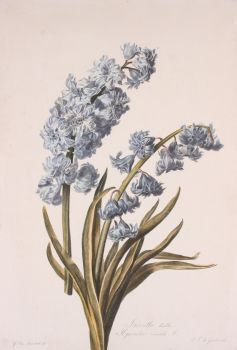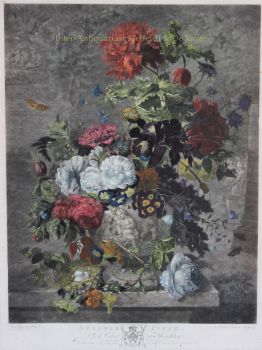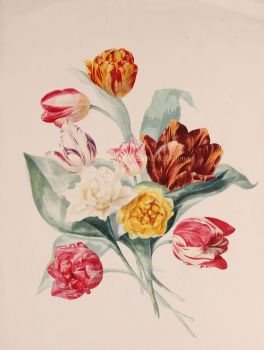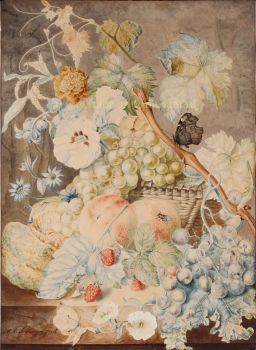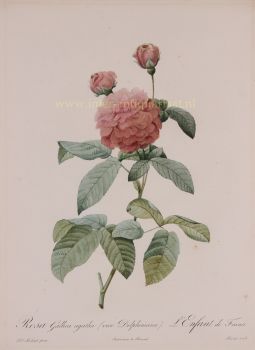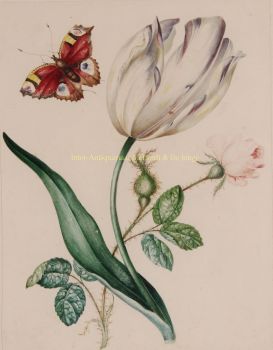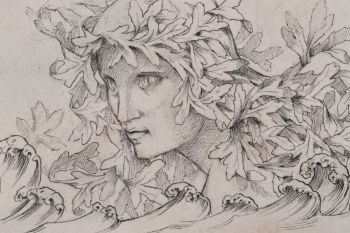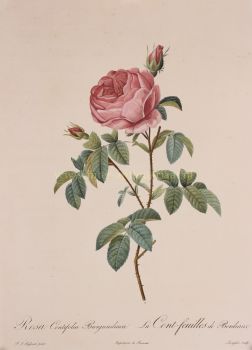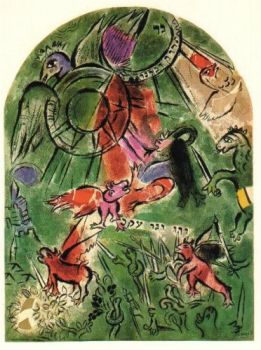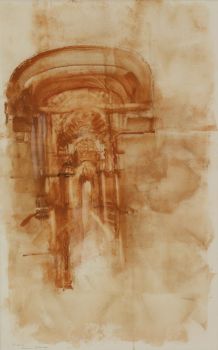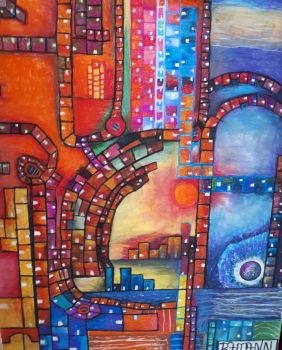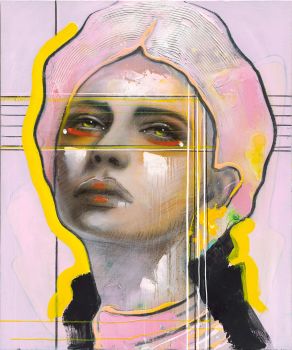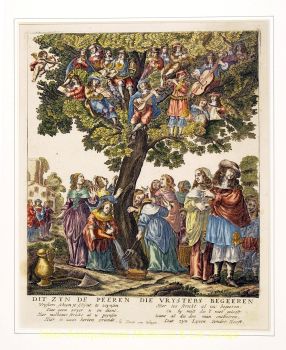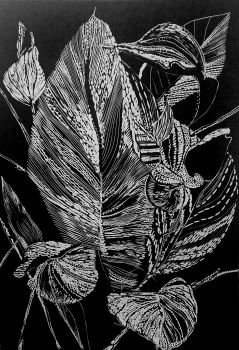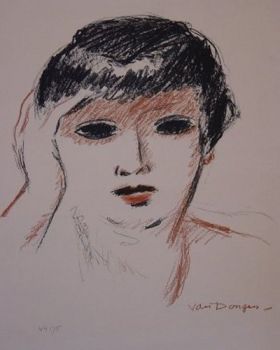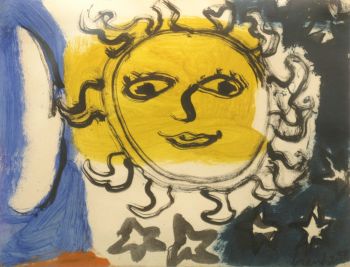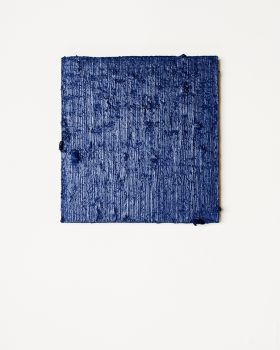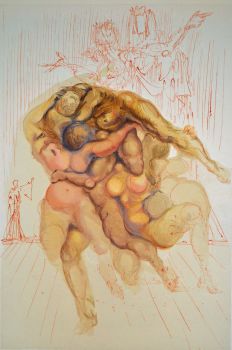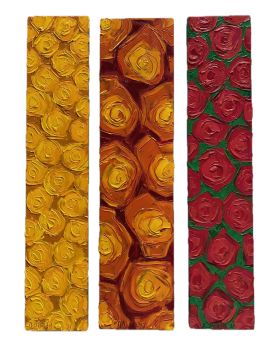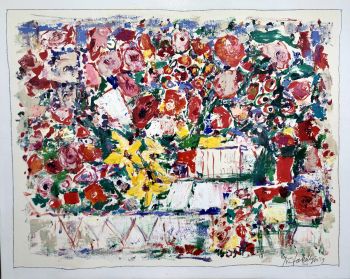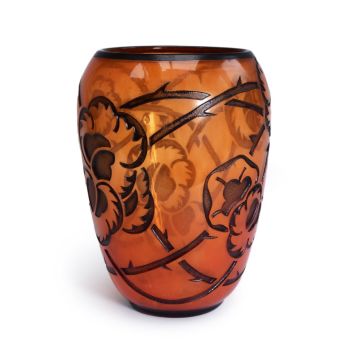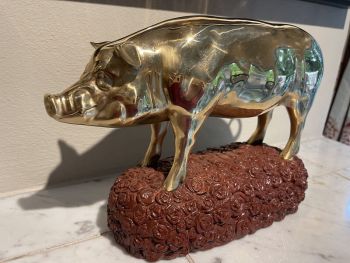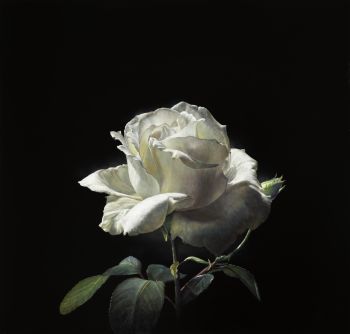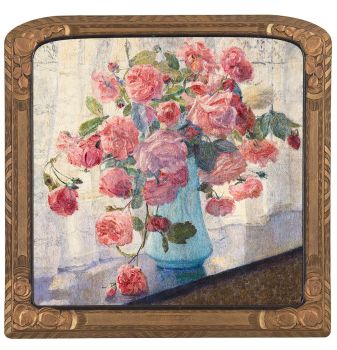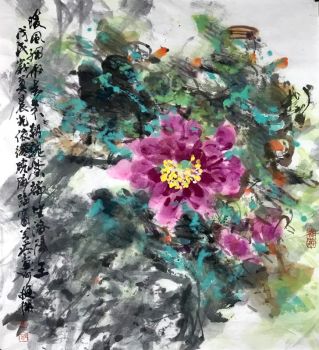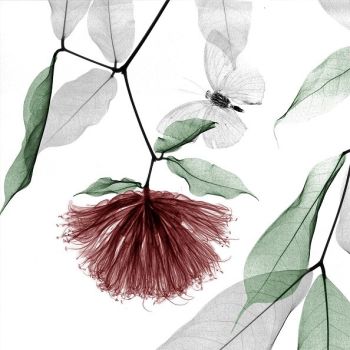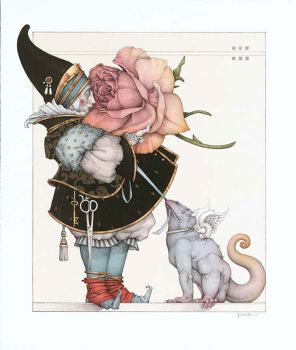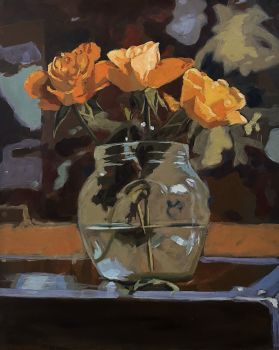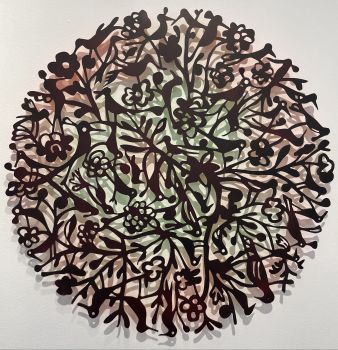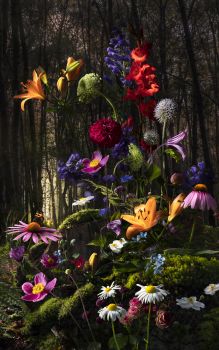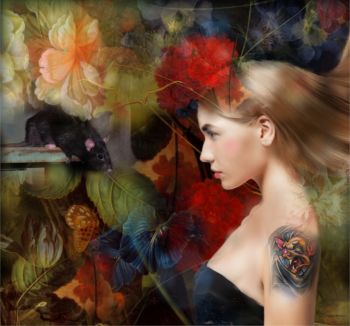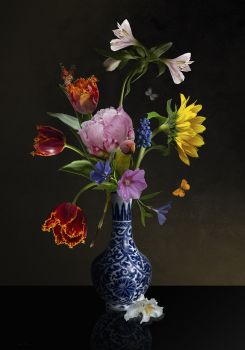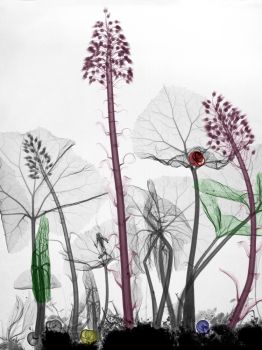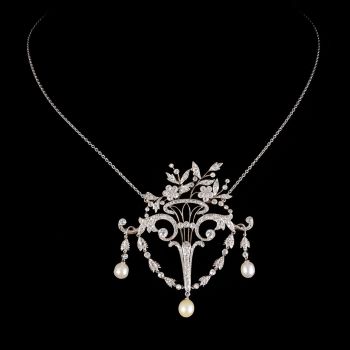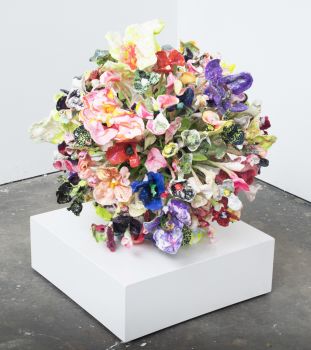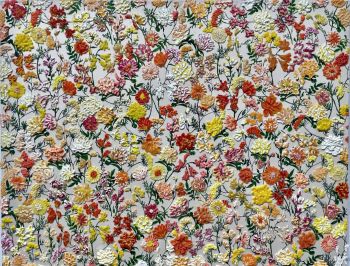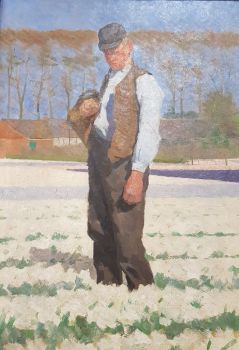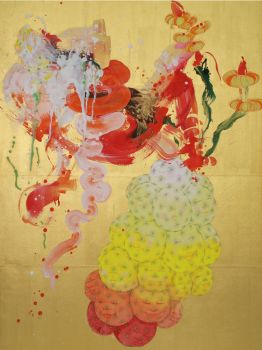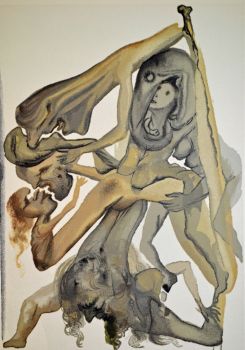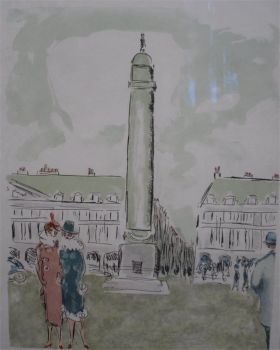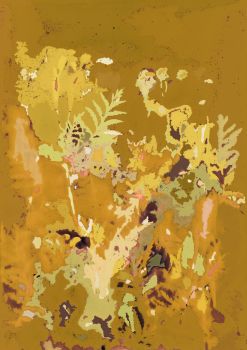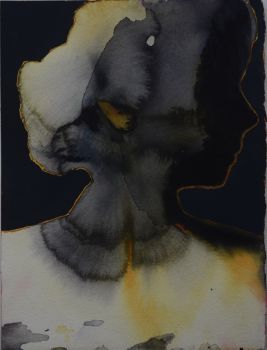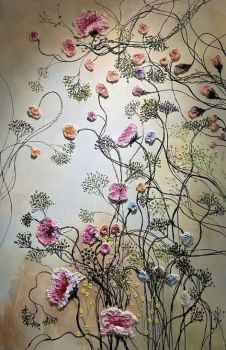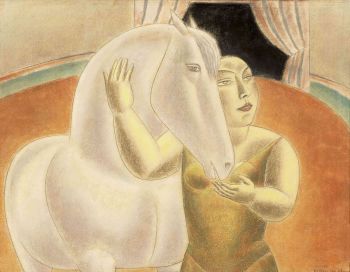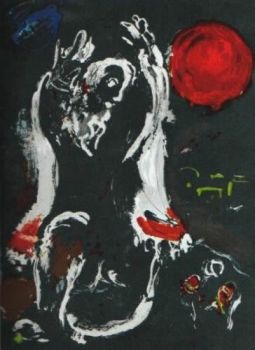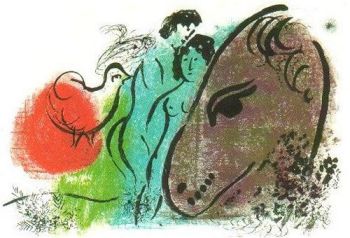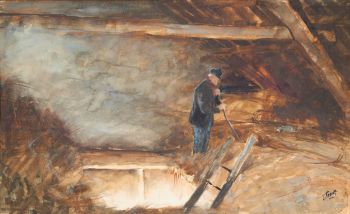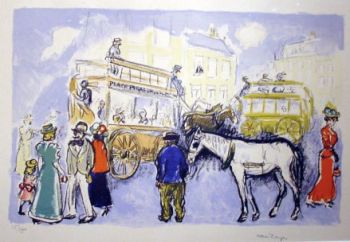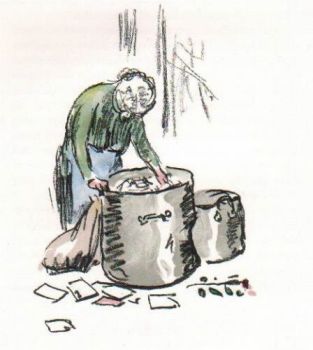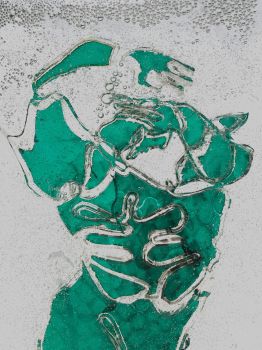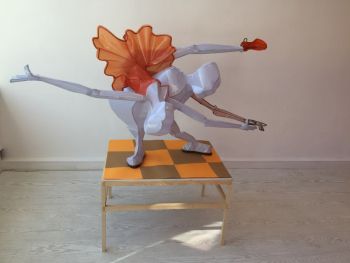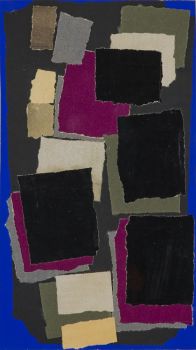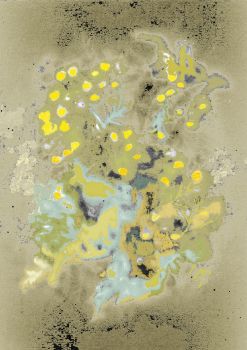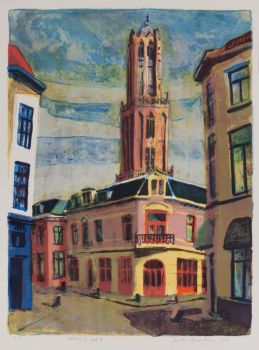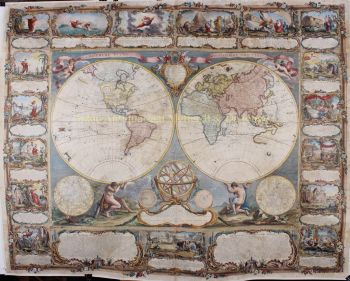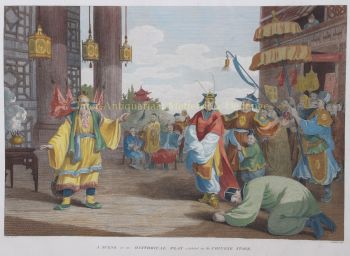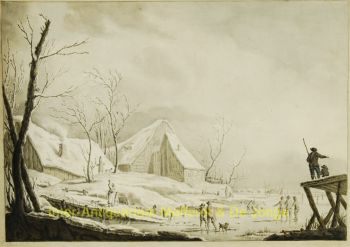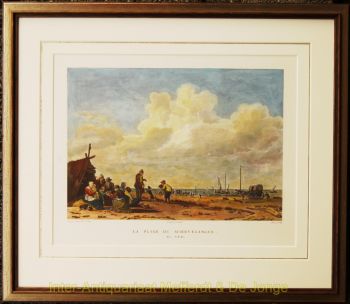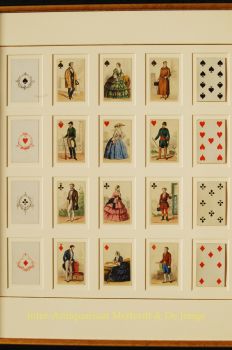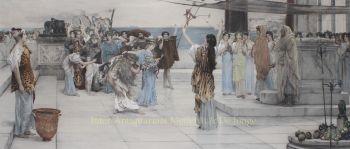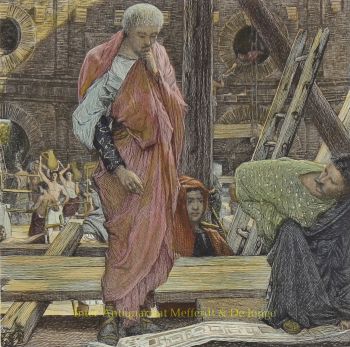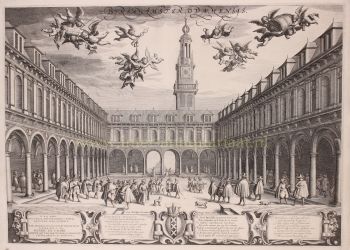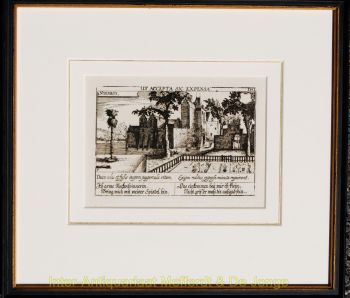Rose 1799
Gerard van Spaendonck
Papier
50 ⨯ 33 cm
€ 1.250
Inter-Antiquariaat Mefferdt & De Jonge
- Über KunstwerkRose a cent feuilles [rose with one hundred petalls) or cabbage rose, stippel engraving made by P.F. le Grand after a drawing by Gerard(us) van Spaendonck from the Fleurs dessinées d'après nature, published between 1799 and 1801. With original hand colouring. Size. (print) approx. 50 x 33 cm. The Centifolia roses date from around 1550. Although once regarded as forms of a species, they are now thought most likely to be hybrids between the autumn damask and an alba rose. Centifolias are usually compact bushes with heavy double flowers which often droop under there own weight. The colours varied from white to deep rose red plus striped and spotted varieties. They were much featured in the paintings of the Dutch masters and came to be known as "The rose of the painters". It has fragrant, mid pink, double flowers, the buds of which are covered in fine tubercles or filaments known as moss. Mosses are natural mutations which first occurred on Damask and Centifolia roses. They were very fashionable in the early eighteenth and nineteenth centuries when several hundred forms were raised. Gerard van Spaendonck (1756-1842) studied with decorative painter Willem Jacob Herreyns in Antwerp. In 1769 he moved to Paris, where in 1774 he was appointed miniature painter in the court of Louis XVI. In 1780 he succeeded Madeleine Françoise Basseporte as professor of floral painting at the Jardin des Plantes, and was elected a member of the Académie des beaux-arts shortly afterwards. Van Spaendonck contributed to over fifty works of Les Vélins du Roi, a famous collection of botanical watercolours owned by French royalty. From 1799 to 1801 he published twenty-four plates as part of his Fleurs Dessinees d'apres Nature (Flowers Drawn from Life), which were high-quality engravings for students of floral painting. Today the Fleurs Dessinees d'apres Nature are considered among the best botanical engravings in the world. Stipple engravings with which one is able to differentiate between different tones of gray, turned out to be highly suitable for depicting botanical details, a method that Van Spaendonck also taught his pupil Pierre-Joseph Redouté. Like other famous flower painters, Van Spaendonck was also technically perfect: in oil, watercolour, pen or pencil, on any scale. With attention to every minute detail and elegance and sophistication of the composition, he shows his mastery. Like Jan van Huysum, Van Spaendonck understood the zeitgeist and created flower compositions that matched the taste of the public of around 1800. He combined the traditional Dutch way of representing flowers with French sophistication and good taste. Price: Euro 1.250,-
- Über Künstler
Gerard war ein älterer Bruder von Cornelis van Spaendonck (1756-1840), der ebenfalls ein bekannter Maler war. In den Jahren 1760-1769 studierte er in Antwerpen bei dem Dekorationsmaler Willem Herreyns. 1769 zog er nach Paris, und 1774 wurde er durch Vermittlung von Claude-Henri Watelet im Alter von 28 Jahren zum Miniaturmaler am Hof Ludwigs XVI. 1777 stellte er erstmals aus. 1780 folgte er Françoise Basseporte (1701-1780) als Professorin für Blumenmalerei am Jardin des Plantes nach. Kurz darauf wurde er zum Mitglied der Académie des beaux-arts gewählt.
Van Spaendonck malte sowohl in Öl als auch in Aquarell. Er fertigte mehr als fünfzig Werke für die Vélins du Roi an, eine renommierte Sammlung botanischer Aquarelle im Besitz der französischen Königsfamilie. Von 1799 bis 1801 veröffentlichte er 24 Tafeln seiner Fleurs Dessinées d'après Nature (Blumen nach dem Leben gezeichnet); Hochwertige Gravuren für Studenten der Blumenmalerei. Heute ist Fleurs dessinées d'après nature ein hoch angesehenes Buch auf dem Gebiet der Blumenmalerei.
1788 wurde Van Spaendonck zum Berater der Académie ernannt und 1795 war er einer der Gründer des Institut de France. 1804 wurde er mit der Ehrenlegion ausgezeichnet. Kurz darauf wurde er von Napoleon Bonaparte geadelt. Van Spaendonck starb 1822 im Alter von 76 Jahren.
In der Groeseindstraat 99 in Tilburg ist eine Gedenktafel zu sehen, wo früher das Geburtshaus der Brüder Van Spaendonck stand. Neben dem Maler Karel Appel ist Gerard van Spaendonck der einzige Niederländer, der auf dem Père Lachaise in Paris begraben ist. Gerard ist direkt hinter Chopins Grab.
Sind Sie daran interessiert, dieses Kunstwerk zu kaufen?
Artwork details
Related artworks
- 1 - 1 / 1
- 1 - 4 / 24
Fontana
Blumenkorb Brosche-Anhänger1900 - 1905
Preis auf AnfrageAns Hemke-Kuilboer Juwelier & Antiquair
1 - 4 / 24- 1 - 4 / 24
- 1 - 4 / 12


